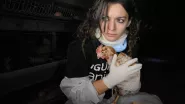Photographing, documenting and working with found objects often originates from a connection made between the finder and the object. The reason for choosing a found object is multi-faceted and complex to untangle. The object may possess an instant aesthetic attraction, an unusual shape, colour or design perhaps. It may exist out of context, presenting an old design of sweet or crisp packet that has long not been sold. Seeing household objects discarded on the street that are associated with blissful harmonic domestic situations, such as children’s toys, present wrapping or letters may invoke subconscious fear of that situation, has been disrupted. The thrown away object symbolising the potential dismantling of that situation. People are sentimental and attach memory and meaning to found objects even when they have not been in their own possession. Modern manufacturing means objects are far from unique, so you are likely to come across an unexpected reminder of your own past when you least expect it and are least prepared. Markers of relationships, lives loved and lost, these objects can do powerful things to our emotional wellbeing in both positive and negative ways.
The use of found objects in photography is still a common thematic choice of both professionals and amateurs. Camera phones provide a documentation tool to share our nostalgic treasure finds with others instantaneously, so that they too can share the sentiment. There is a question of why we still retain interest in found objects when our lives are so rich with information and media. If at any point we wished to recall a memory of a past life, a long-lost memory of cassette tapes and VHS, we could indeed search for these items and bask in their forgotten glory in digital picture form. The answer is simply, it is not the same. The quiet of a found object possesses no agenda other than to hurtle you into a rush of memory, emotion or hurt without warning. Our everyday digital lives contain little of this spontaneity. The unpredictability, the unknown, the unexpected is trampled into 24/7 newsfeeds, ‘on this day’ reminders of terrible social media photographs from over a decade ago that you would much rather forget. Phones have a terrifying habit of piecing together your own memories and pushing notifications to you to review them when they see fit. This type of memory is incomparable to the feelings summoned by seeing a tiny piece of plastic in the gutter, the tiny piece of plastic you recognise from endless days playing with the larger piece it has inevitably broken off from.
Found objects in photography can be viewed as markers of the current political and societal climate and the associated issues. Chloe Juno’s ongoing project Someone’s Rubbish began in 2014 and currently contains over 2,500 images of detritus found on the streets of Brighton, England. Juno started to photograph these things subconsciously without purpose until a photographer (Georgios Makkas) mentioned that it was like a street museum. Juno then set out purposefully to record the narrative that naturally unfolds when selecting and photographing other people’s waste. It is through the collection of these photographs that Juno can see the patterns of society running through the work, a timeline of our living and our domestic lives. Juno photographs the humorous and the tragic, the fun and the disgusting.

There is no filter on what is included in the series in terms of subject matter, but the change of viewpoint from photographer to screen gives the impression the work is hanging rather than laid beneath your feet. The differing textures housing the finds provide readymade frames, and the condition of the waste often offers even more insight to the snapshot of time in which it was found. In Notice Jobs Money (see the cover image), the paper is wet and weathered and discarded cigarettes and matches surround. The narrative of unemployment continues in the readymade composition, torn off numbers giving clue of the previous human interaction that took place. Many poignant topics run through Juno’s project that can be interpreted as markers of contemporary living. Homelessness, drug use, unemployment, marriage, elections, birthdays, right through to the current pandemic. The archive that is being built through the project is a brutal, unedited one. There is sadness upon viewing some of Juno’s photographs, a disbelief that they are extracted from a recent time. One that should be better for all, not in the unequal and disparate state that actually exists. Environmental concern and out of control consumerism cannot be ignored in Juno’s work, with the overarching topic of waste being the at the forefront of the growing archive.
We no longer take photographs of faces as freely as we once did, given tighter consent and image use rules, digital paranoia and GDPR. Although, this insecurity about personal privacy jars with the second nature selfie culture that we have grown to live within. The act of turning the camera away from the face in the way of the classic street portrait, and onto the objects is a way of continuing the documentary practices of past. Yet, it appears rehashed to meet the needs of contemporary image consumption in projects such as Juno’s. There could be suggestion that Juno is a forerunner in a rise in looking more deeply into real life for mementos that ground us and secure the digital living that consumes so much of our lives. The street museum is silently yelling out to us, pointing out the things in the news that can be so easily ignored yet horrific to endure.




